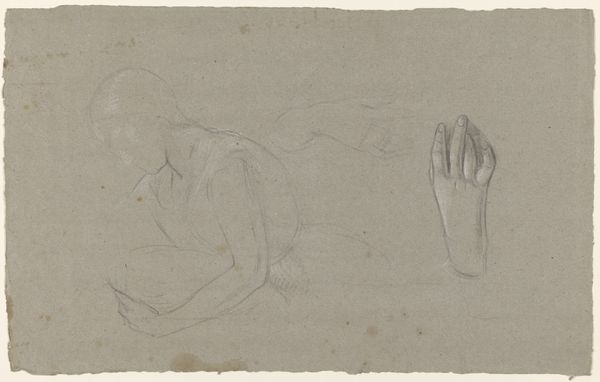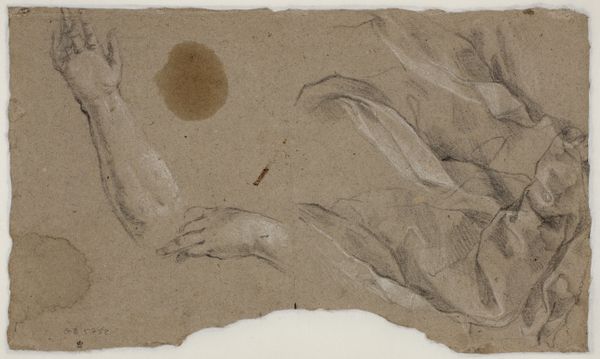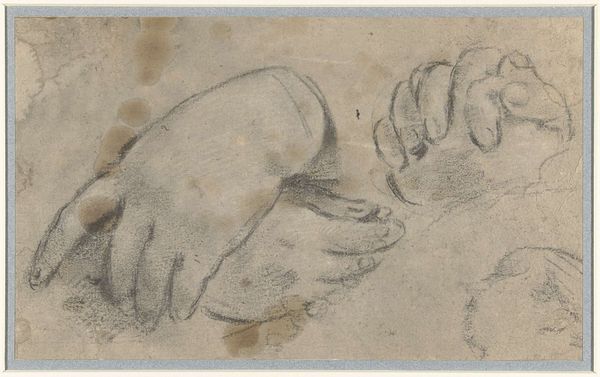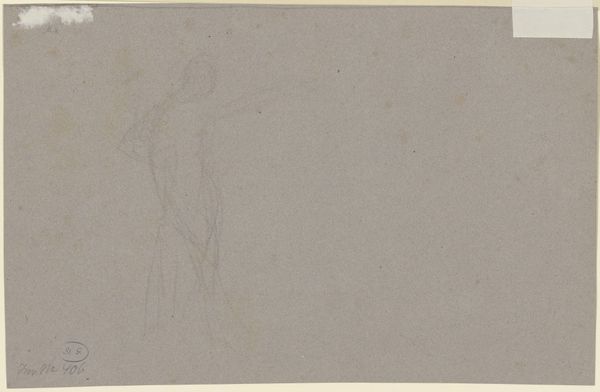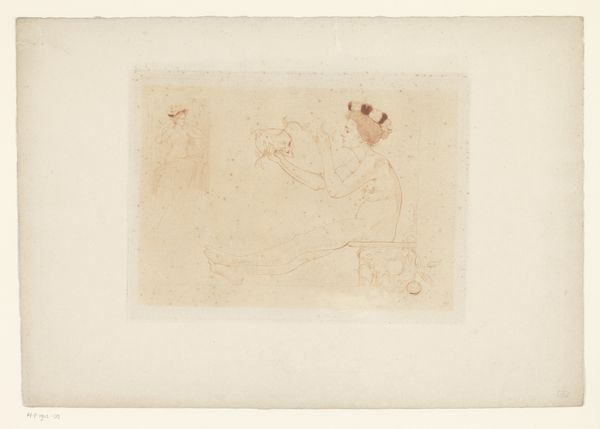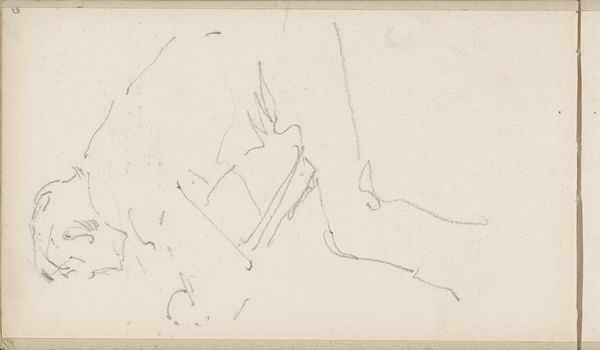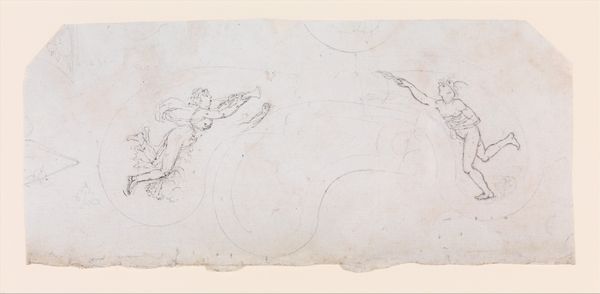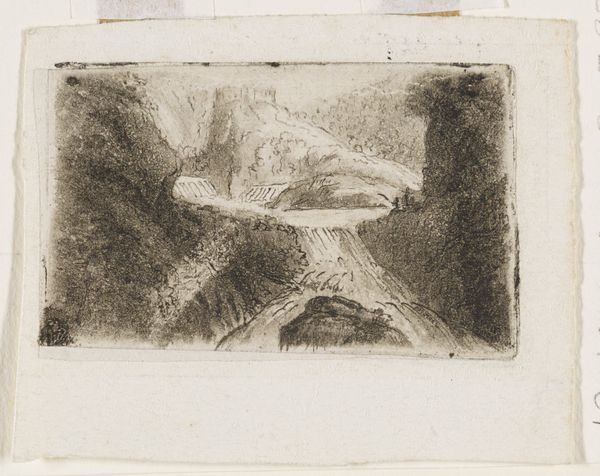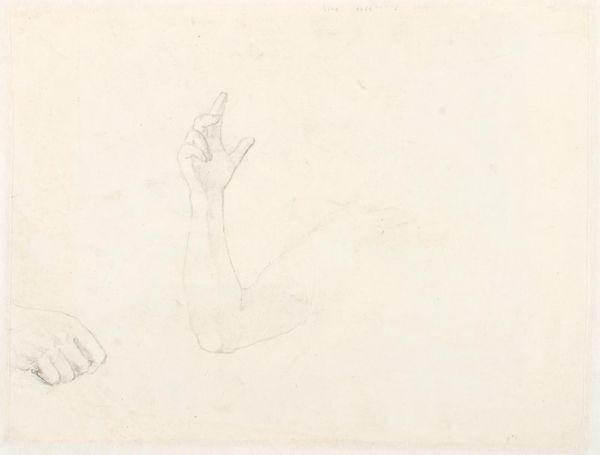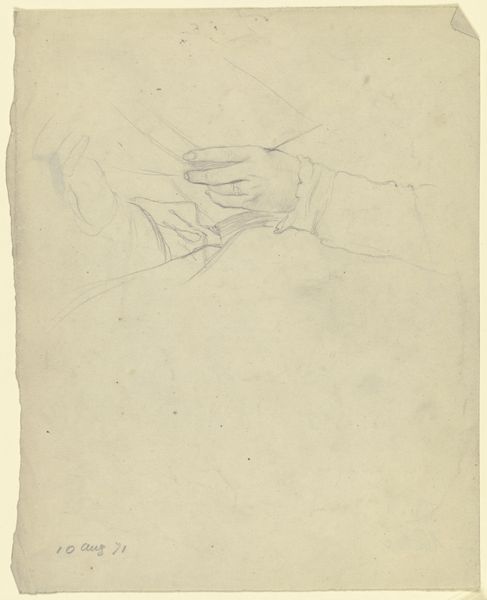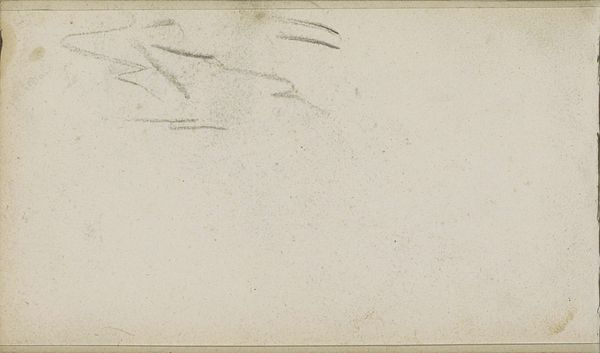
#
amateur sketch
#
toned paper
#
light pencil work
#
incomplete sketchy
#
personal sketchbook
#
ink drawing experimentation
#
sketchbook drawing
#
watercolour illustration
#
sketchbook art
#
watercolor
Dimensions: height 360 mm, width 580 mm
Copyright: Rijks Museum: Open Domain
Jan Adam Kruseman made these Studies van handen in the 19th century, using graphite on paper. Here, the artist used a humble material - graphite - to capture the supple forms of the hand. The softness of graphite allows for delicate gradations of tone, building form through repeated, tentative strokes. The grey paper serves as a middle ground, allowing the graphite to both darken and lighten as needed. Look at the way the artist coaxes volume from the flat surface, using shading to suggest the roundedness of the palm and the articulation of the fingers. The process of drawing itself is a form of labor, requiring intense observation and careful execution. In a rapidly industrializing world, the hand became a potent symbol, representing both the skill of the artist and the potential for human creativity to be harnessed by machines. Yet, it is the very imperfection of the hand-drawn line that reminds us of the human touch, a quality often absent in mass-produced objects. The importance of this work lies not only in the final image, but also in the act of making, the physical engagement between artist, material, and subject.
Comments
No comments
Be the first to comment and join the conversation on the ultimate creative platform.
